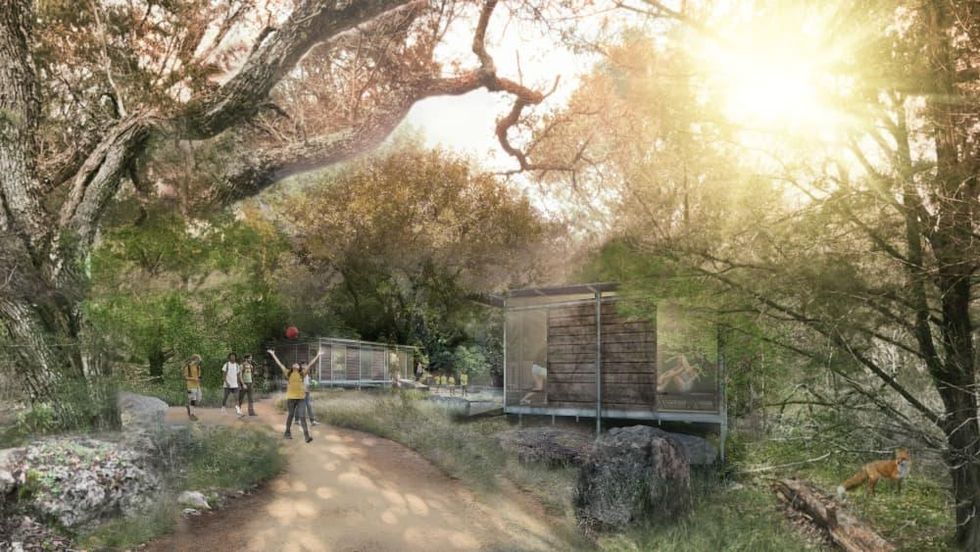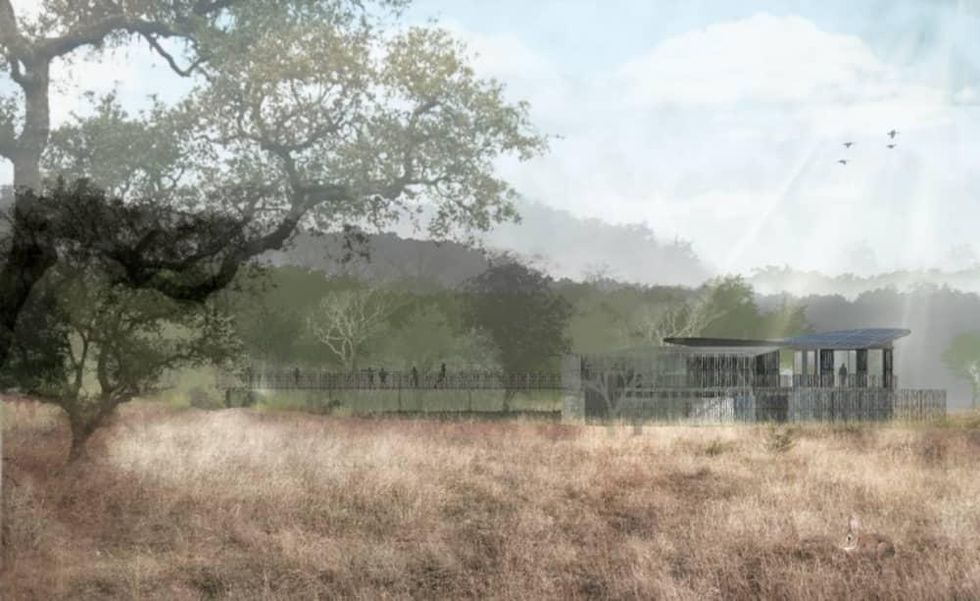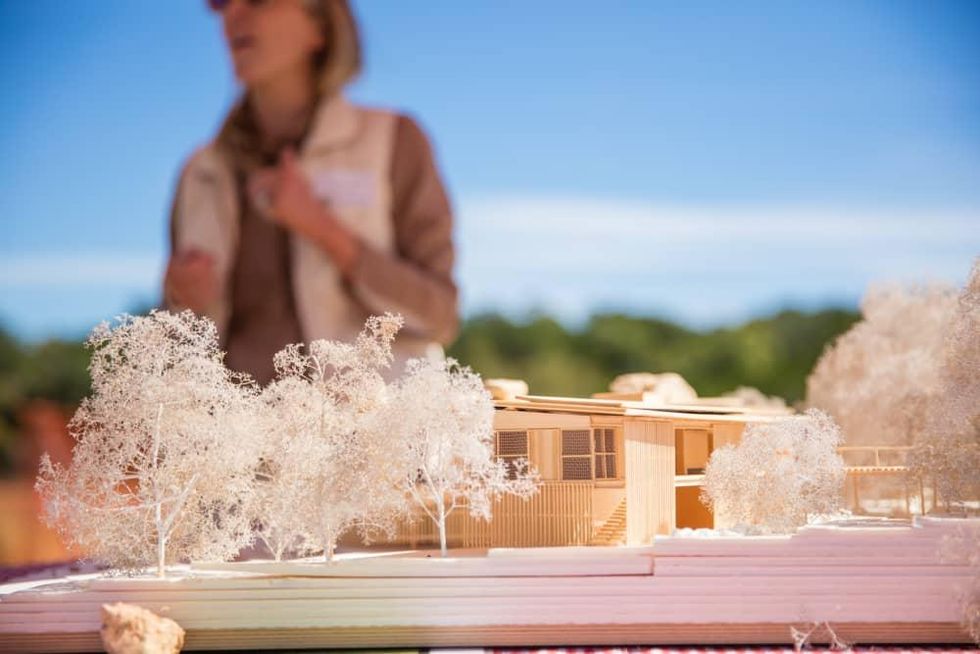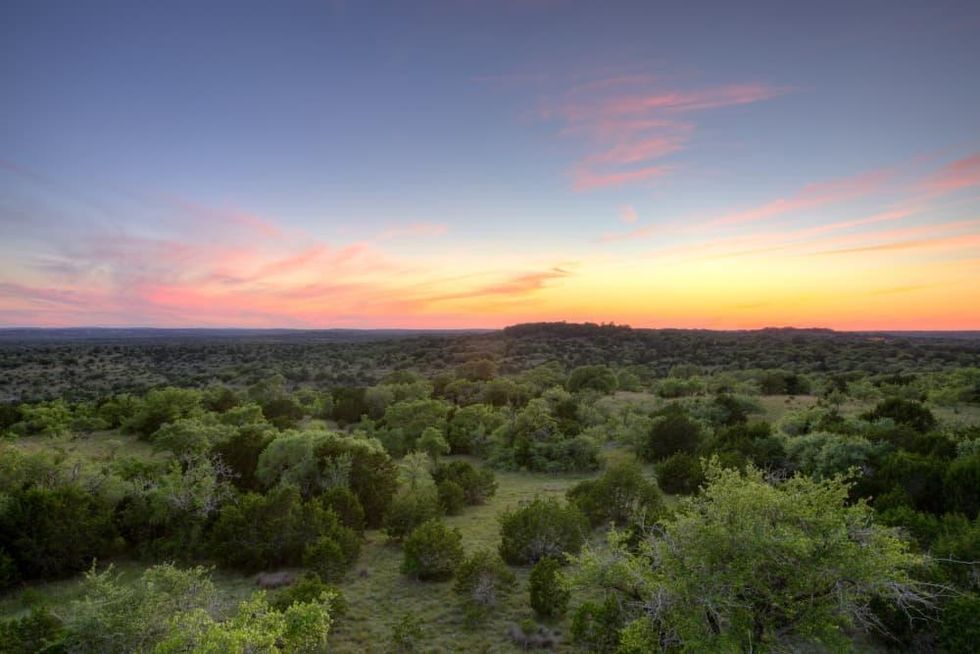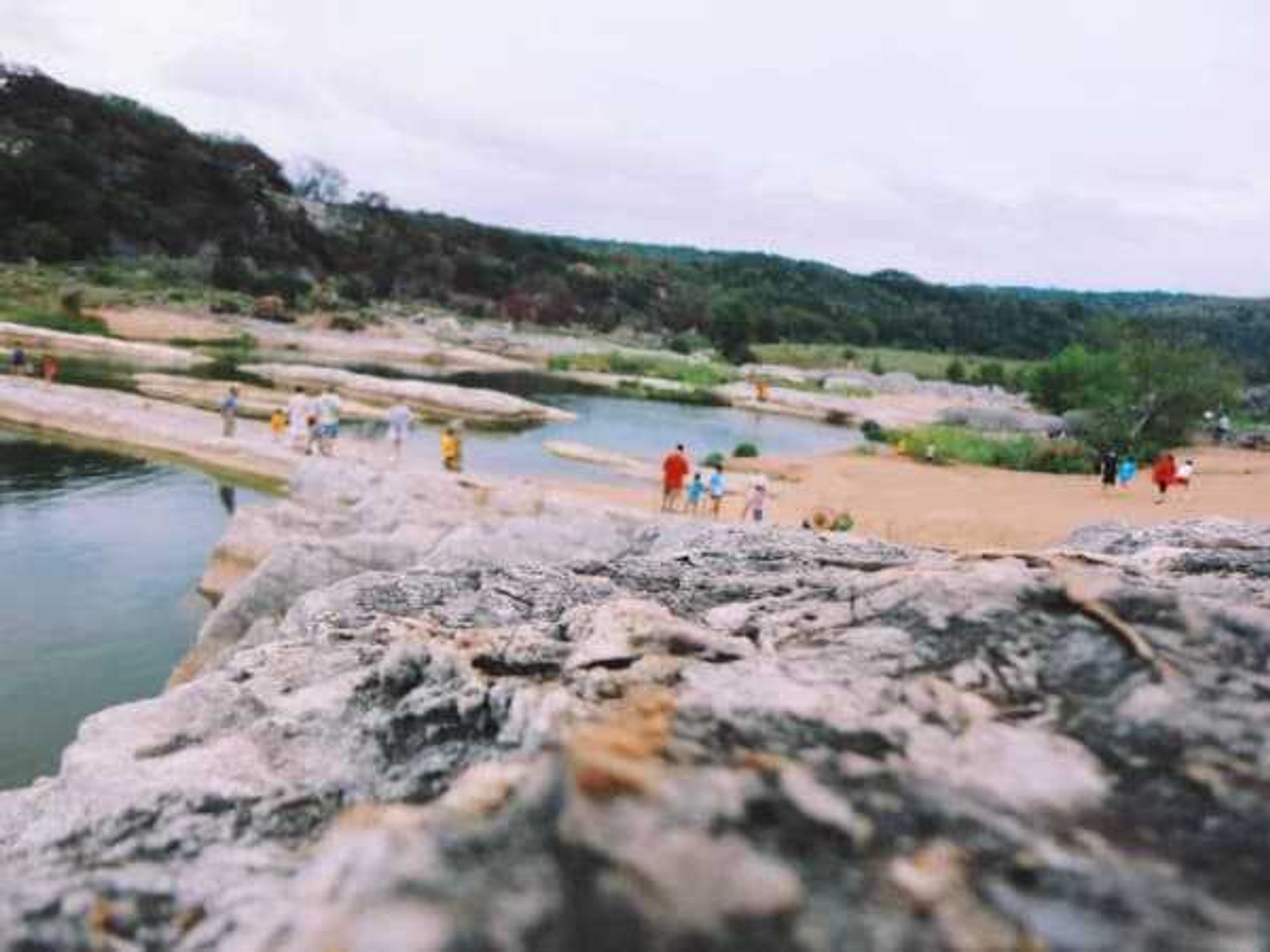Super natural
Groundbreaking sustainable campsite breaks ground at 6,400-acre Barton Creek ranch
There’s no shortage of wild space around Austin, and building a campsite doesn’t sound too demanding. That is until you add electricity, running water, and temperature control, and invite hundreds of people. Oh, and make it sustainable.
Shield Ranch, a 6,400-acre site on Barton Creek broke ground this month on renovations that will offer protection from the elements year-round for campers of all ages on family, education, spiritual, and even corporate retreats. A dining pavilion and 11 sleeping structures will mostly blend into the landscape, working unassumingly with breezes and the path of the sun. Renderings characterize the cabins as simple lean-to sheds on stilts: piles of straight lines made of vertical wooden stakes, solar-paneled roofs, and empty spaces.
When construction is done, the space will sleep up to 78 and host 200. Shield Ranch welcomes many types of groups, but special time in the summer is set aside for the site’s longtime beneficiaries: campers with El Ranchito, a program for Austin’s city kids from low-income families to get away and experience nature. The rustic but innovative new accommodations won’t just house them during their time away, but will also set a good example for sustainability that they can model in their lives in their more urban homes.
“This gives them an opportunity to really immerse themselves in the natural world,” explains architect Arthur Andersson, pointing out the lasting significance of sustainable design, past a minimized impact on the land. “The programs of the camp have to do with ... looking and experiencing the natural world, and we wanted the structures to be a part of that whole dialogue. It’s a neat way to think about living.”
Andersson / Wise, the studio tasked with the deceptively complicated project, started building that design ethos with one foot deep in the site’s past. The Shield family established their large parcel of the Hill Country nearly a century ago, in 1938, passing it through four generations so far. By the ’90s, the family entered over 90 percent of the land in conservation easements between the Nature Conservatory and the suddenly growing city of Austin, keeping it under private ownership but entrusting its longevity to those dedicated entities. The goal at Andersson / Wise (who are known, according to Andersson, as architects who build “as if air conditioning hadn’t been invented yet”) was to think about the way the land would have been used back when Shield Ranch was established, and make sure those practices carry it elegantly into the future.
First, lists Andersson, was keeping it cool. He speaks of the history of buildings in the South, casting his memory back to his early career in New Orleans, where residential buildings utilize wraparound spaces and careful window placement in relation to the scalding sun. The sleeping shelters at Shield Ranch open up toward the breeze to welcome in cooler air from the shaded overhangs.
Next, the design had to incorporate water in a way that didn’t impose too much on the natural landscape or create unnecessary waste. This solution, thankfully, falls from the sky. Working with the Texas Commission on Environmental Quality, the architectural design and consultant team developed the state’s first approved public water supply system to serve guests using rainwater. Waterless evaporative toilets (which collect waste underground while stabilizing and minimizing it with airflow through a chimney, essentially heated by the sun) will be installed near the sleeping shelters. Having proved the efficacy of the system to an organization as meticulous as the TCEQ, Andersson hopes it lowers the bar for similar systems on future sites.
Looking back just highlights a need to design for the future, and the buildings are meant to root into their surroundings. The cedar dressing will gray with age and exposure, hopefully meaning that it will only continue to look better with age. A steel superstructure will keep the cabins strong against storms, and will be fabricated off-site and brought neatly on for assembly. Because of its galvanized finish, the steel won’t need any painting for decades, if not a century.
“This kind of architecture, or this kind of construction, is not so much about style or taste or trying to be impressive,” says Andersson. “It’s more subservient to the environment. In other words, they’re background buildings.”
Even if the buildings fade into the background, having permanent structures where there would be tents provides an infrastructure for the campsite to build a central community. Just as a business coach might say one needs to spend money to make money, sustainability is often best sought through intensive upfront resources with great longevity. It would make sense, we all hope, that a building inspired by last century would last effortlessly into the next.
The Shield Ranch Campsite construction is projected to last through May 2022. Until then, those curious about the site and groups interested in educational or immersive programming when it opens can find more information at shieldranch.com. The Shield Ranch Foundation is always accepting donations.
